Growing and caring for asarin
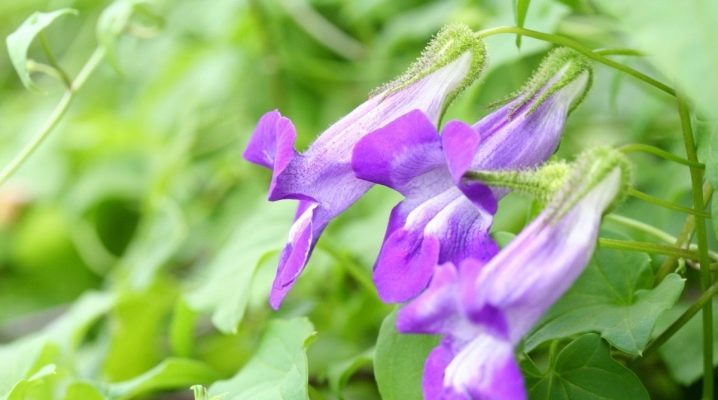
Loaches are an integral part of many garden landscapes. They hide unsightly buildings and create amazingly beautiful living arches. In another way, they are called vines. Of course, the primacy in this matter is deservedly given to various loach roses. However, many other varieties of loaches also deserve attention, since they are not inferior to a rose either in beauty or in an abundance of flowers and greenery. One of these examples is asarina. In the article, we will consider a brief description of the plant, as well as the main points of reproduction, planting, cultivation.
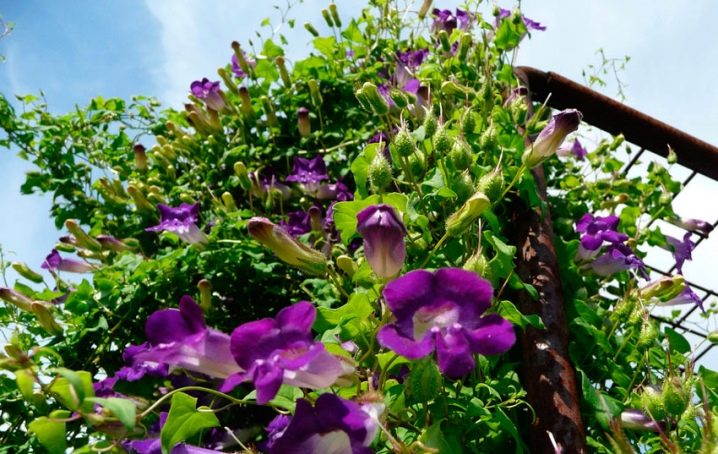
Description of the flower
Azarina is climbing plant (liana), which scientists attribute to the plantain family. There are about 15 varieties of this flower. It is a perennial plant, but in the domestic territory it is grown as an annual.
This plant is believed to be native to South America or California (USA). The plant gained its popularity around the 18th century, and has since been grown universally.
It is used, like any loach, for decorative purposes, often as a living screen, or to hide unsightly buildings. If you plant it without support, then it is able to hide the unevenness of the soil.

Some plant this plant in a "bowl", which is then hung up. The result is an amazingly beautiful picture with a cascading waterfall of flowers. The plant begins flowering in June and continues until the frost. At the same time, the flowers themselves live for a relatively short time, they replace each other - some wither, and others bloom. Thanks to this, the plant can bloom continuously.
One of the most common varieties is asarina climbing or maurandia.... Often this particular variety is grown as living arches, screens and other similar objects.
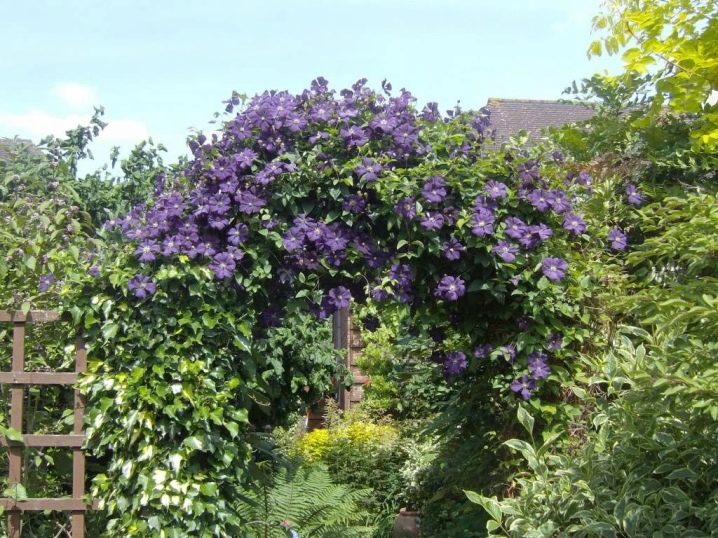
Types and varieties
Since the homeland of the plant is remote countries, only a part of the varieties were able to take root in the conditions of domestic weather. Here is a brief description of some of them.
Climbing
She is also called the Mexican Beauty. Obviously, it got its name from the area that is considered its homeland. Liana can grow up to 7 m. Differs in a large amount of dense greenery and bright flowers, similar to bells.
This variety includes several subspecies of the plant. Their main difference is the shade of the flowers. The variety Bridges White white flowers, u Joan Lorraine - dark purple buds, Mystic rose - pink, y Red Dragon and Sky Blue red and blue respectively.

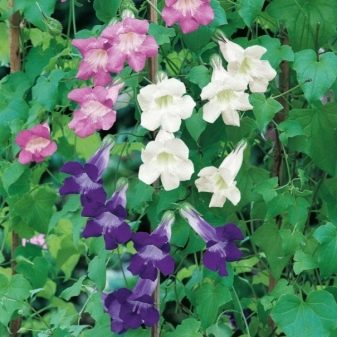
Reddish erubescene
And she is also called asarina red or blushing... It can grow up to 3.5 m in length, while on the support it can rise only up to 1.2 m. The flowers are tubular, can reach almost 7 cm. The flowers at the base are spotty-white, to the tips they become bright pink.

Barclay
The length of the plant can reach 3.5 m. A characteristic feature is fast growth rate of leaves... Flowers can be purple, light purple hues. The buds can reach up to 7 cm, they have a typical asarin shape - a tubular bell.
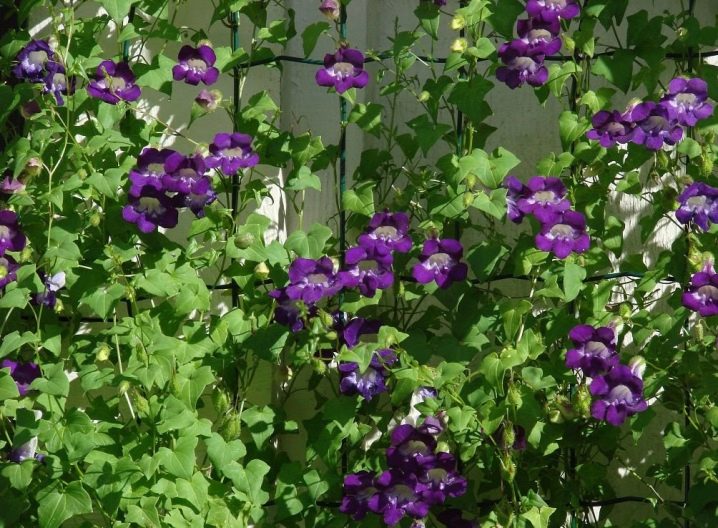
Antirrino-flowered
This specimen can grow up to 2.5 m in length. The flowers are bell-shaped and can be white, blue, red or purple. It blooms for a relatively long time and quite violently - from June until the onset of the first frost.
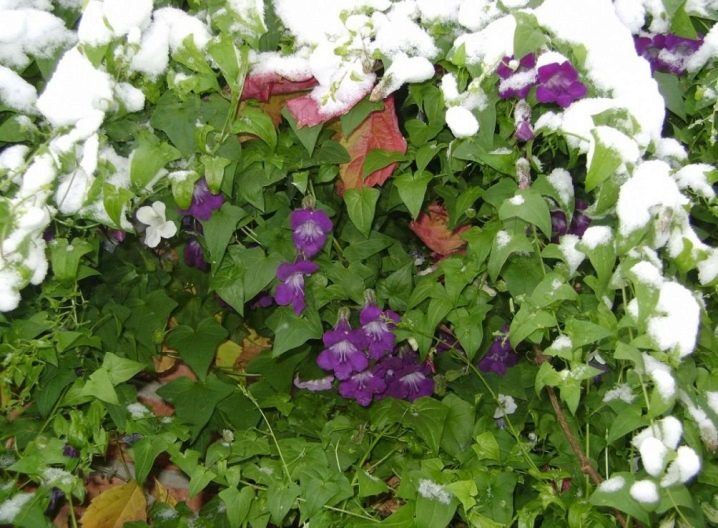
Other
The variety called asarina Prisstrayaya is relatively popular.... Usually grown in France and Spain. It is planted where it is necessary to correct irregularities in the soil, as this flower spreads on the surface of the earth, forming a fluffy green carpet.
For a small hedge is used Asarin Purpusa... A characteristic feature is small growth. The plant can only grow no more than 40 cm in length. The flowers are more open than other varieties and have a purple hue. However, the buds are quite small (the largest reaches no more than 5 cm) and can be slightly lost among the abundance of greenery.

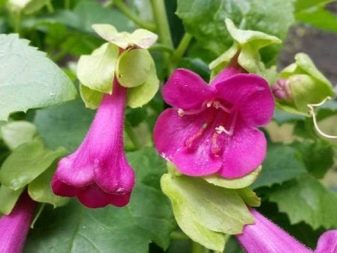
Growing conditions
Despite the fact that reproduction of a flower requires some effort, caring for it when growing in the open field is not too difficult.
Due to the peculiarities of the domestic climate, asarina does not tolerate winter (the plant is thermophilic), therefore it is grown as an annual. In order to extend its life, it is necessary to dig it up every fall and plant it in a pot that will be kept at home. In the spring, the plant will need to be transferred to open ground again.
A place
The plant is thermophilic, and therefore you need to plant it only in a lighted place... For planting, you cannot choose an area in the garden where drafts or cold winds are walking. However, in extreme heat or a lot of sunlight, the plant may die.
Therefore, it is better to choose places where during such periods you can install a small canopy for partial shade.
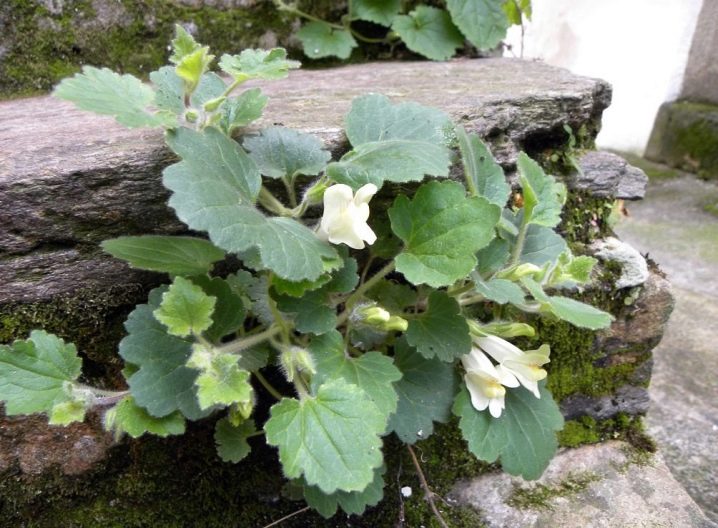
The soil
The main requirement for the soil is good air permeability. It should be neutral in acidity. The most acceptable for asarin is loam. After planting the plant, it is necessary to regularly weed the soil, increasing its air permeability. This will not only provide access to air, but also improve moisture absorption.
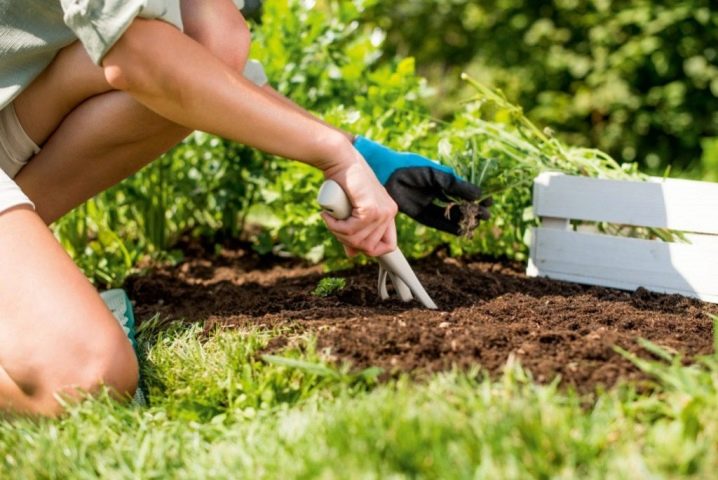
Landing rules
On average, the optimal distance between plants is 60 cm. It is this area that is sufficient for the root of the plant to feel good, and it can grow fully. It is also necessary to plant in such a way that it can be placed next to the flower and the support that it will wrap around.
If it is a thin wire or thread, then 60 cm of free space between the plants is quite enough.
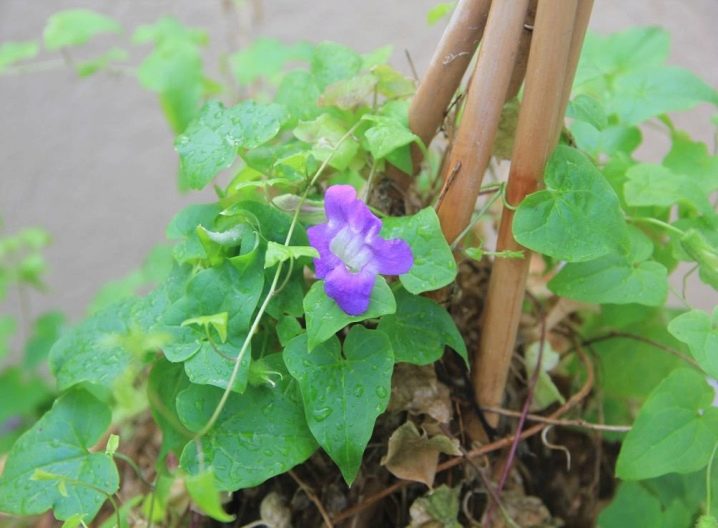
Watering
This is one of those plants that requires frequent and high-quality watering... Watering should be done daily, and in especially hot periods twice a day, preferably in the morning and evening. Spraying daily with warm water will also benefit the plant. Boiled water is best suited for this.
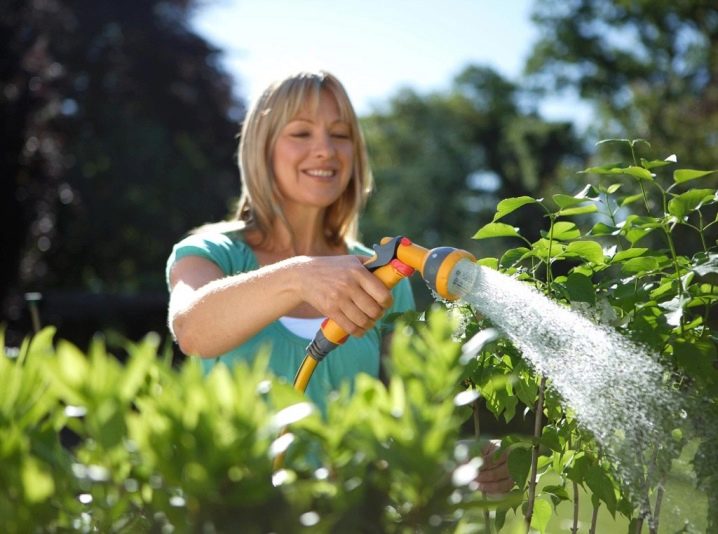
Top dressing
The flower requires relatively frequent feeding - almost every week. It is necessary to apply mineral fertilizers and focus on compositions containing large amounts of potassium and phosphorus... One of the natural fertilizers in this category is a solution of chicken manure. Adult plants need to be fed with mullein infusion every two weeks.
All varieties of this plant must be pinched from time to time. In this way, the required shape can be formed.
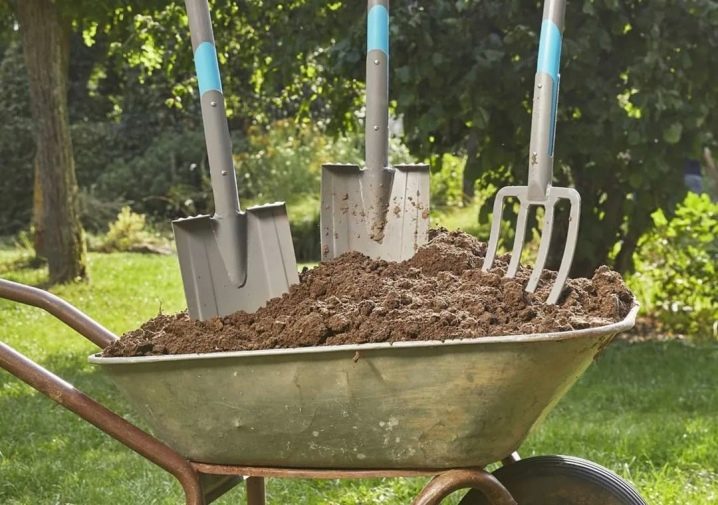
Reproduction
In addition to the fact that asarina gives self-seeding, it can be propagated by seeds and independently... Preparatory work begins in winter. In order for a full-fledged flower to grow from seeds, you must first plant the seeds in pots or a container with a substrate at home. As a substrate, a mixture is used, consisting in equal shares of humus, peat, sand and leafy earth. Immediately before sowing, the seeds must be disinfected. The easiest way is to microwave it at maximum temperature.... 10 minutes will be enough for the process. After it is necessary to pour over the seed with a hot solution of potassium permanganate. Seeds can be planted a day after these two procedures.
The soil is sprinkled with seeds, which will later need to be pressed to the ground. A layer of sand is poured on top (no more than 5 mm thick). After that, the entire surface is moistened with water from a spray bottle. The surface of the container is covered with a film, which is removed for a couple of hours a day. Seedlings appear after about a month.
If this does not happen, then the soil with seeds is placed in a cold place for a month, then kept warm again. As a rule, the seedlings that appear after these manipulations are no different from the shoots obtained the first time.
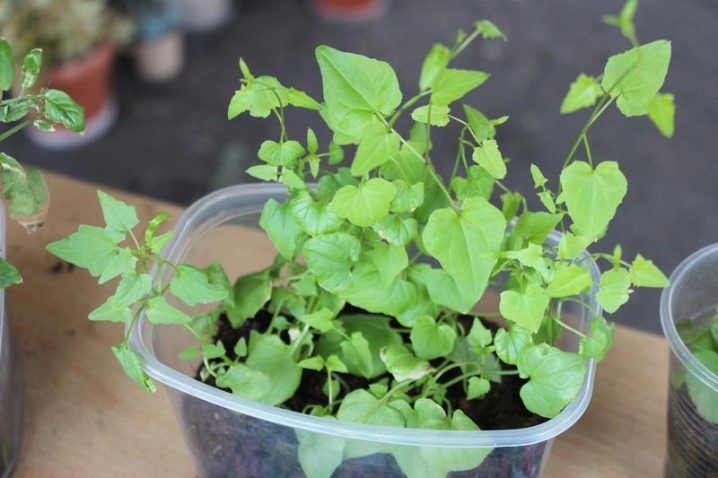
When the seedlings have 2 or 3 leaves, they need to be transplanted into separate pots or transferred to larger pots. After another week and a half, you will need to apply any mineral fertilizer to each pot. Further, every two weeks, the necessary fertilizers are applied. For example, if the flower has few leaves, or they are too weak, then nitrogen is introduced, which stimulates the growth of "greenery".
With the onset of the second half of May, the pots are gradually put out into the street so that the seedlings get used to the weather conditions. Every day the time the pots stay on the street should increase. Thus, a complete “move” should be completed within 2 weeks. In general, the period from the moment of planting the seeds, up to flowering, can take up to 4 months.
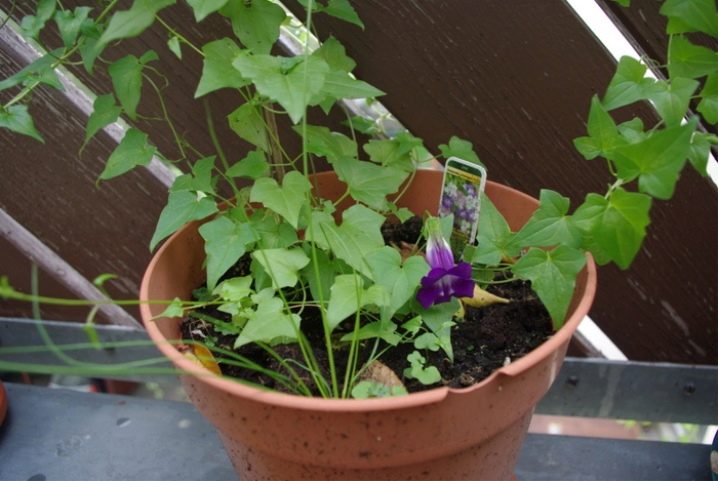
Diseases and pests
So that the plant does not waste energy, you need to cut off wilted flowers or other dead parts of it (dried leaves, for example).
As with most moisture-loving plants, asarinas pose a great danger to fungi... The flower can hit the black leg. This is a fungal disease in which the neck of the root begins to darken, then softens, as a result, the entire aerial part of the plant breaks off. As a rule, the disease affects several plants at once, and plant survival is rather low. However, the plants that have not yet been affected, which are next to the diseased, need to be transplanted and watered with a solution of the drug "Fitosporin".
It also often affects asarin and aphid... Small transparent green bugs suck out juices from the plant, as a result of which the leaves gradually become transparent, and then full of holes. If aphids are found, it is necessary to process the plant every week until the insects are completely eliminated. A good result in this regard was distinguished by the drugs "Karbofos", "Akarin", "Fufanon" and others.
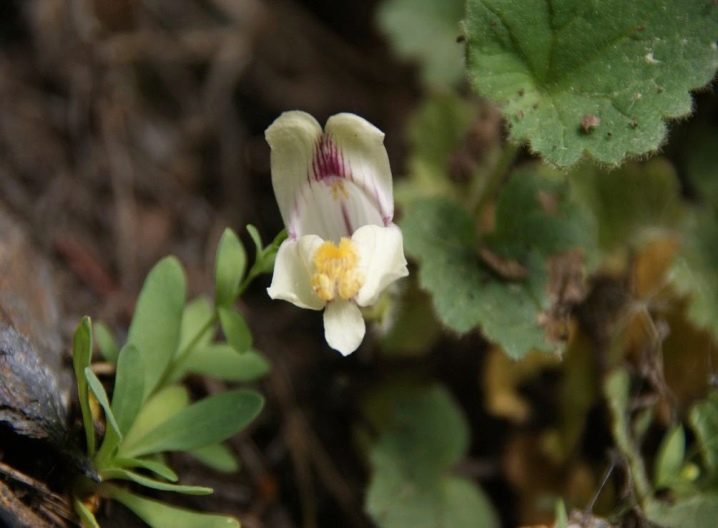







































































































The comment was sent successfully.